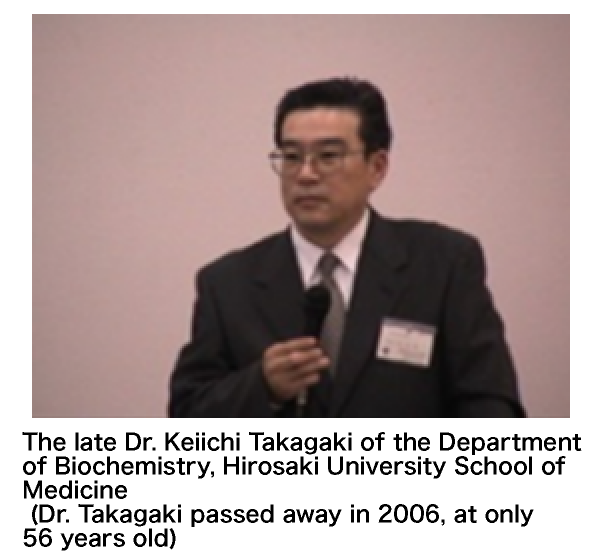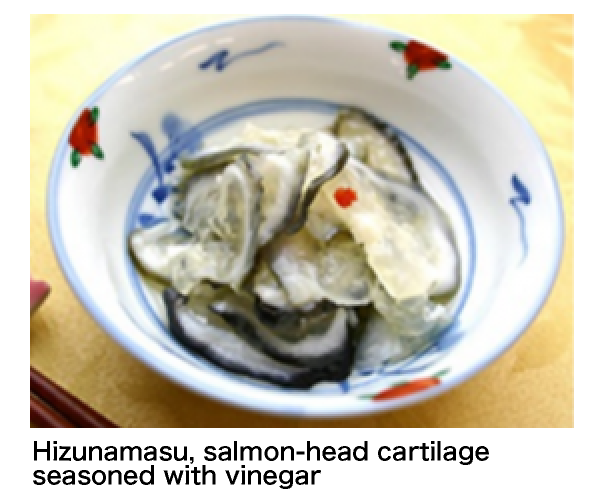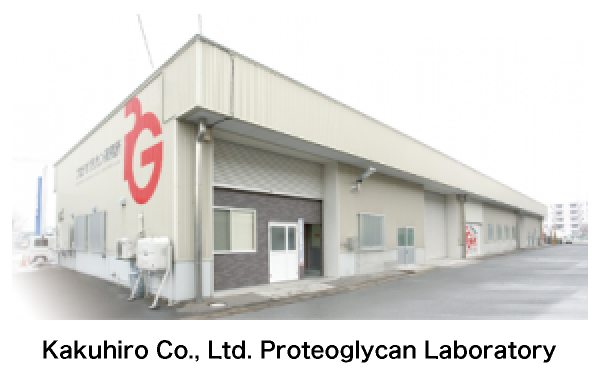The rather mysterious link between proteoglycan and Aomori
Proteoglycan used to cost 30 million yen per gram—until a miracle happened in Aomori!
This fixed-structure type glycoprotein was given the name proteoglycan in 1970, and attracted much attention. However, because it is sensitive to heat, and effective ways to extract it had not been developed at that time, a single gram of proteoglycan cost 30 million yen to produce. What’s more, hazardous reagents were necessary for its extraction, making it a “dream ingredient” that was impractical for commercial use.
However, a story proving that truth is stranger than fiction unfolded in Aomori, making proteoglycan commercially viable.

Taking hints from the traditional dish Hizunamasu (thinly sliced raw salmon cartilage with Japanese radish seasoned with vinegar), it finally became possible to mass-produce highly concentrated proteoglycan from the year 2000.
|
Research exploring new effective components from agricultural, forestry and fishing resources had been underway in Aomori, Japan, with the Aomori Prefectural Industrial Technology Research Center at its core. In 1990, scientists suspected that they could find proteoglycan at high concentrations in the nose cartilage of salmon. As salmon heads were often unused and discarded, there was anticipation for a sudden burst of new industries that could use salmon heads as a promising resource.
It was at this point that Dr. Takagaki entered the picture. He was a researcher at Hirosaki University School of Medicine’s Department of Biochemistry who had a long history of glycan research. Dr. Takagaki had been searching for ways to extract proteoglycan from the cartilage of salmon noses without applying heat. In 1998, he was inspired by a traditional dish called Hizunamasu (thinly sliced raw salmon cartilage with Japanese radish seasoned with vinegar), offered at the Japanese-styled pub he frequented in Hirosaki city. Hizunamasu is a traditional dish that uses vinegar to soften sliced salmon-head cartilage. Dr. Takagaki noted that “the reason that vinegar softens salmon cartilage may be due to proteoglycan, the foundation of cartilage, dissolving...” hinting at the possibility of extracting proteoglycan using acetic acid instead of heat.
With this in mind, in 2000 a technology that applies food-grade acetic acid and alcohol that are safe for human body to extract ample amounts of highly-concentrated proteoglycan from the cartilage of salmon noses at less than 1/1,000 of the previous cost was established through an industry-academic project in cooperation with Aomori companies. It was an historic moment that gave birth to safe and low-cost proteoglycan. |


|
Safe and trusted by humans and nature, as it’s still created with only salmon and vinegar

|
Currently, proteoglycan is extracted and refined at the Kakuhiro Co., Ltd. Proteoglycan Laboratory. Despite the modern facilities and equipment, the process of immersing pulverized salmon-nose cartilage in 4% concentrated food-grade acetic acid solution for 72 hours to dissolve proteoglycan in vinegar is the same as preparing a Hizunamasu dish. That is why proteoglycan manufactured with salmon nose cartilage in Aomori is safe and trusted by both humans and nature. |
Aomori anticipates progress as a base for proteoglycan research and production
|
Certified mark for the Aomori PG brand |
Although it may not reach the heights of Silicon Valley, which gave birth to many IT corporations with Stanford University at its core, Aomori is attempting to establish a “Proteoglycan Valley” with industry, government, and academic cooperation for integrated research and manufacturing (industrial cluster). At its core is Hirosaki University, the center of proteoglycan research. The Aomori-Proteoglycan Brand-Promotion Council was established to market proteoglycan from Hirosaki University and other related products. Along with other activities, the council has been working to certify with the “Aomori PG Brand Certification Mark” only products that pass standards such as minimum proteoglycan content.
The relationship between the long research history at Hirosaki University and proteoglycan have been very close up to this point, and it looks like becoming even closer than ever. With lofty ambitions from Aomori to Japan and the world, look forward to more from the Proteoglycan Valley! In July 2016, the Aomori-Proteoglycan Brand-Promotion Council became an incorporated association, changing its name to the Association for Promotion of Aomori PG. |

